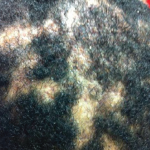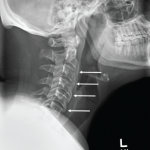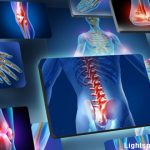The role for genetics has been studied using a murine model of CRMO. There is evidence for a single amino acid mutation in the gene controlling the synthesis of the proline-serine-threonine phosphatase interacting protein 2 on chromosome 18. In Majeed syndrome, a syndrome with similar clinical features to SAPHO (neutrophilic dermatosis and multiple osteitic lesions), there is a mutation of LPIN2, which encodes lipin 2, a protein involved in the apoptosis of polymorphonuclear cells. In PAPA syndrome (pyogenic sterile arthritis, pyoderma gangrenosum, and acne), there is a mutation on chromosome 15 that affects the CD2-binding protein 1(CD2BP1), which is part of an inflammatory pathway involved in several other autoinflammatory syndromes including familial Mediteranean fever, Muckle-Wells syndrome, neonatal onset multisystem inflammatory disease, hyper IgD syndrome, and familial cold urticaria. Some investigators speculate that SAPHO syndrome may result from a heightened host response to intestinal bacteria that may be mediated by NOD2/CARD15 synthesis in the inflammasome. NOD2/CARD15 is a “pattern recognition receptor” that recognizes bacterial peptidoglycans and stimulates a response using the innate immune system. Since mutations in NOD2/CARD15 have been identified as a risk factor for the development of Crohn’s disease, is it possible that similar mutations predispose to the development of SAPHO?
P. acnes, the bacteria that derives its name from its production of propionic acid, has been implicated in the pathogenesis of SAPHO. It is widely distributed throughout the body, including the oral cavity, large intestine, conjunctivae, external ear, and skin, especially sebaceous follicles. P. acnes contains numerous genes that generate enzymes that degrade skin and proteins, possibly creating a host of immunogenic antigens in the susceptible host.
Aside from antibiotic therapy as described above, a number of other therapies have been utilized in SAPHO, but evidence supporting each treatment is limited. These include nonsteroidal antiinflammatory drugs, corticosteroids, methotrexate, and sulfasalazine. There are reports of anti-TNF drugs showing benefit for some patients. Bisphosphonates have an antiosteoclastic effect, and both pamidronate and zoledronic acid have been documented as effective in some case reports. Presently, treatment remains empiric and must be individualized depending upon the severity of symptoms.
In conclusion, SAPHO is a syndrome that can present in many different ways.
The clinician should consider the diagnosis in any patient with “sterile osteomyelitis,” isolated vertebral lesions on imaging studies, severe acne, hidadrenitis suppurativa, or pustular lesions on the palms and soles.
Dr. Brasington is professor and head of the fellowship program at Washington University in St. Louis.


